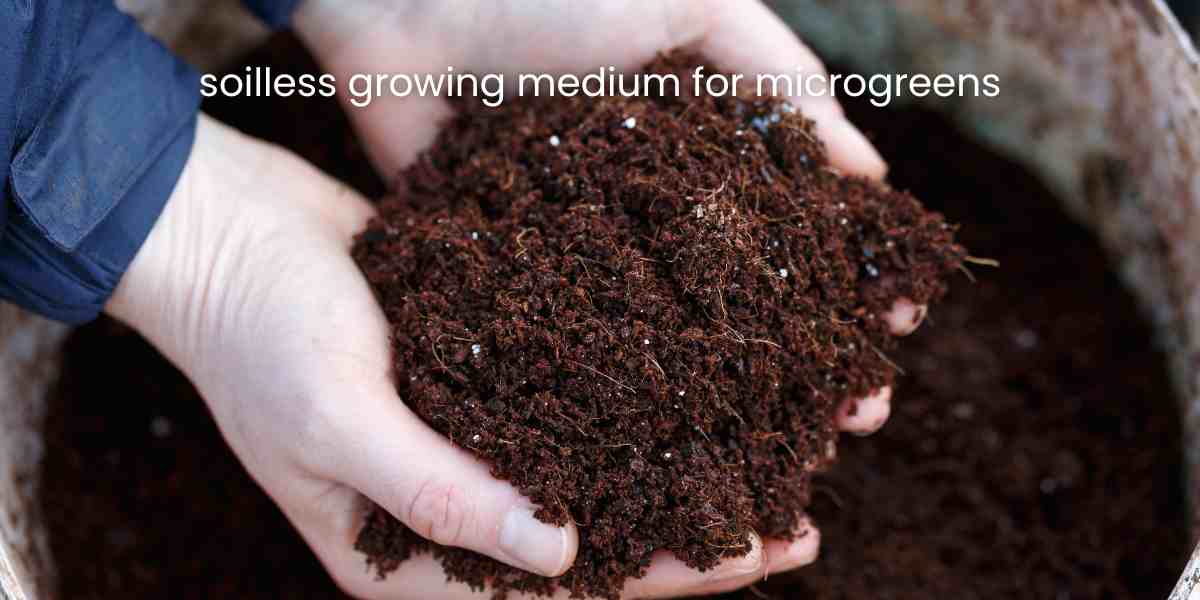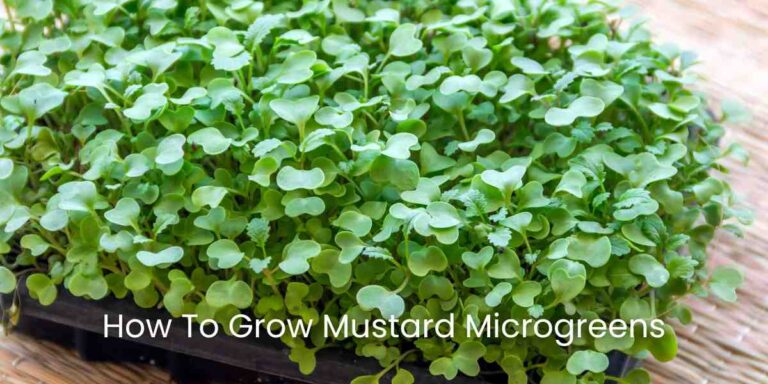Best Soilless Growing Medium for Microgreens

Introduction
Many people are getting interested in growing microgreens these days. Everyone can see these tiny plants trending on social media platforms. While most beginners start with regular soil, experienced growers know that a soilless growing medium for microgreens gives much better results.
The main problem with normal soil is that it creates a big mess. Many home growers face issues like soil spilling on kitchen counters and plants dying due to soil diseases. This is where a soilless growing medium for microgreens becomes really useful. It keeps the growing area clean and gives better success rates in growing healthy microgreens.
This article will explain different types of soilless growing options available in the market. Readers will learn about the actual costs and benefits of each option. The information comes from real testing and experience of many growers. Both beginners and regular growers will find useful tips about choosing the right growing medium for their microgreens. The guide focuses on practical solutions that work well in Indian weather conditions.
Benefits of Using Soilless Growing Medium for Microgreens
Using a soilless growing medium for microgreens has many benefits that make life easier for growers. Let’s look at why more and more people are switching from regular soil to these modern growing options.
Cleaner Harvest Time
One of the biggest advantages is how clean the harvesting process becomes. With soil, microgreens often get dirty and need extra washing. This washing takes a lot of time and can damage the delicate leaves. But with a soilless growing medium, growers can simply cut the microgreens and pack them. No washing needed! This saves time and keeps the leaves fresh for longer.
Better Seeds Growing Success
Seeds grow much better in soilless media. The texture helps seeds stay in place and get the right amount of water. Many growers report that 9 out of 10 seeds grow successfully in soilless medium, while in soil it might be only 7 or 8. This means less wastage of expensive microgreen seeds.
No Plant Diseases
Plant diseases are a common problem in soil. Many growers lose their crops because of fungus and other diseases that live in soil. A soilless growing medium for microgreens reduces these problems by almost 80%. The clean environment means healthier plants and more consistent harvests.
Use Again and Again
Most soilless growing media can be used multiple times. After harvesting, growers can clean the medium with hot water and use it for the next batch. Some materials can be used up to 5-6 times if maintained properly. This is not possible with regular soil, which needs to be replaced every time.
Saves Money in Long Run
While soilless media might seem expensive at first, they actually save money over time. Growers spend less on:
- Replacing growing medium
- Treating plant diseases
- Buying new seeds due to failed germination
- Water and cleaning supplies
Plus, the higher success rate means more microgreens to sell or eat from the same amount of space and effort. After 3-4 months of regular growing, the cost benefits become very clear.
Top Soilless Growing Media Options
Now let’s look at different types of soilless growing medium for microgreens available in the market. Each option has its own good points and some drawbacks too.
Coco Coir
This growing medium comes from coconut husks, which are easily available in India. The material looks like small brown fibers and feels slightly rough to touch.
Properties and Benefits:
- Holds water really well, which means less watering needed
- Natural anti-fungal properties that keep plants healthy
- Very light weight and easy to handle
- Good air spaces for roots to grow properly
Best Ways to Use: Growers should first soak the coco coir in water for 15-20 minutes. Then squeeze out extra water until it feels like a wet sponge. Spread it about 1 inch thick in growing trays. Press it down lightly – not too hard, just enough to make it even.
Cost Matters: A 5kg block costs around 300-400 rupees and can fill many growing trays. Each brick expands 5-6 times when soaked in water. One can use it 2-3 times if cleaned properly after each harvest.
Hemp Mats
These mats are becoming popular because they are eco-friendly. They look like thick paper sheets and come in ready-to-use sizes.
What They’re Made Of: Pure hemp fibers pressed together without any chemicals. The natural fibers create perfect conditions for small roots to grow.
How to Use Them:
- Soak in water for 5 minutes before using
- Place directly in growing tray
- Don’t need to cut unless tray size is different
- Water from bottom, not top, to avoid displacing seeds
Environmental Benefits:
Hemp mats break down completely in compost after use. They don’t create plastic waste like some other options, and growing hemp uses less water than many other crops.
Biostrate Felt
This is a special kind of growing mat made for professional growers, but many home growers also use it now.
Material Details:
Made from recycled materials, these white felt-like mats are very strong. They don’t break apart when wet and maintain their shape well.
Growing Advantages:
- Roots don’t stick to the mat, making harvest very easy
- Perfect thickness for most microgreens
- No pre-soaking needed, just wet and use
- Very clean to handle
Money Matters:
These cost more than other options – about 100-150 rupees per mat. But they last longer and give very consistent results, which makes many growers prefer them.
Hydroponic Mats
These are the most technical-looking option among soilless growing media for microgreens.
Different Types:
- Mineral wool mats – most common type
- Foam-based mats – lightweight option
- Synthetic fiber mats – sturdy choice
How to Use: First-time users should be careful with mineral wool mats as they can irritate skin. Always wear gloves while handling. Soak them in pH-balanced water before use. They need careful water management as they can get waterlogged easily.
Good and Bad Points:
Pros:
- Very clean and professional looking
- Excellent for root development
- Perfect for automated watering systems
- Can be cut to any size needed
Cons:
- More expensive than natural options
- Not biodegradable
- Need more attention to watering
- Some types can be tricky for beginners
Comparison of Different Growing Media
Different types of soilless growing medium for microgreens have their own special features. Here is a simple comparison to help growers choose the right option for their needs.
| Growing Medium | Water Retention | Root Growth | Cost per Tray | Ease of Use | Reusability |
| Coco Coir | Very Good (2-3 days) | Good | ₹30-40 | 4/5 | 2-3 times |
| Hemp Mats | Medium (1-2 days) | Excellent | ₹60-80 | 5/5 | Single use |
| Biostrate Felt | Good (2 days) | Very Good | ₹100-150 | 4/5 | 3-4 times |
| Hydroponic Mats | Medium (1 day) | Excellent | ₹120-150 | 3/5 | 2 times |
Water Holding Capacity
Among all options, coco coir holds water the longest. Most growers water coco coir only once in 2-3 days. Hemp mats need more frequent watering, usually once daily in normal weather. During summer months, all media types need more frequent watering.
How Roots Grow
Hemp mats and hydroponic mats show the best root development. Roots grow straight and strong in these materials. Coco coir also gives good results, but sometimes roots get tangled in the fibers. Biostrate felt provides balanced root growth and makes harvesting very easy as roots don’t stick to it.
Money Matters
Looking at the costs:
- Coco coir is cheapest and locally available
- Hemp mats cost more but need no preparation time
- Biostrate felt and hydroponic mats are expensive but last longer
- All options work out cheaper than soil in the long run
Easy to Use Rating
For beginners, hemp mats are most user-friendly. Just place and use. Coco coir needs some preparation but is quite manageable. Hydroponic mats need more attention to water levels and pH balance. Biostrate felt is somewhere in between – not too difficult but needs proper handling.
Best Soilless Growing Media for Microgreens
1. Cocopeat-Based Soilless Medium
2. Cloudx Coir Coco Coir Microgreens Grow Mat
3. Micro-Mats Hydroponic Grow Pads
4. IFFCO Urban Gardens – Magic Soil
5. Plant Potting Mix Soil for Plants – Soil Less All Purpose
Best Practices for Using Soilless Media
Growing microgreens successfully requires proper handling of the soilless growing medium. Here are the most important things growers need to know.
Proper Preparation Steps
Every growing medium needs some preparation before use. For coco coir, soak it in normal water for 20 minutes. Hemp mats need just 5 minutes of soaking. Biostrate felt and hydroponic mats need a quick rinse with clean water. The growing medium should feel damp but not completely wet. One simple test is to squeeze the medium gently – only 2-3 drops of water should come out.
Managing Water Levels
Water management is very important for healthy plants. Too much water causes rotting, too little causes dry plants. Here’s what works best:
- Morning watering is better than evening
- Bottom watering helps avoid fungus problems
- Keep water level in bottom tray at 1/4 inch
- Check moisture by touching the growing medium daily
Temperature Matters
Different seasons need different care. In summer, growing media dry faster and need more water. In winter, they stay wet longer. Keep growing trays in a place where temperature stays between 20-30 degrees Celsius. During very hot days, move trays to a cooler spot to avoid quick drying.
Common Mistakes to Avoid
Many beginners make these mistakes with soilless growing medium for microgreens:
- Pressing the medium too hard when preparing
- Overwatering in the first few days
- Not cleaning trays between batches
- Using too thin a layer of medium
- Mixing old and new growing media
Reusing and Disposing
Proper cleaning helps reuse growing media safely:
- Remove old roots after harvest
- Rinse with hot water
- Dry in sun for 2-3 hours
- Store in dry place until next use
When disposing, add used growing medium to garden compost. Natural options like coco coir and hemp mats break down easily. For hydroponic mats, check if local recycling centers accept them.
Conclusion
Choosing the right soilless growing medium for microgreens makes a big difference in growing success. After looking at all options, it’s clear that each growing medium has its own advantages.
For beginners, hemp mats and coco coir are good choices to start with. They are easy to use and give good results. Hemp mats work best for those who want a no-hassle option, while coco coir is perfect for budget-conscious growers who don’t mind some preparation work.
For more serious growers who want professional results, Biostrate felt and hydroponic mats are worth the extra cost. These materials give very consistent results and work well for large-scale growing.
Here’s a quick summary of what works best for different situations:
- Home growing: Coco coir or hemp mats
- Small business: Biostrate felt
- Large scale growing: Hydroponic mats
- Eco-friendly choice: Hemp mats
- Budget option: Coco coir
Last update on 2025-06-28 / Affiliate links / Images from Amazon Product Advertising API











